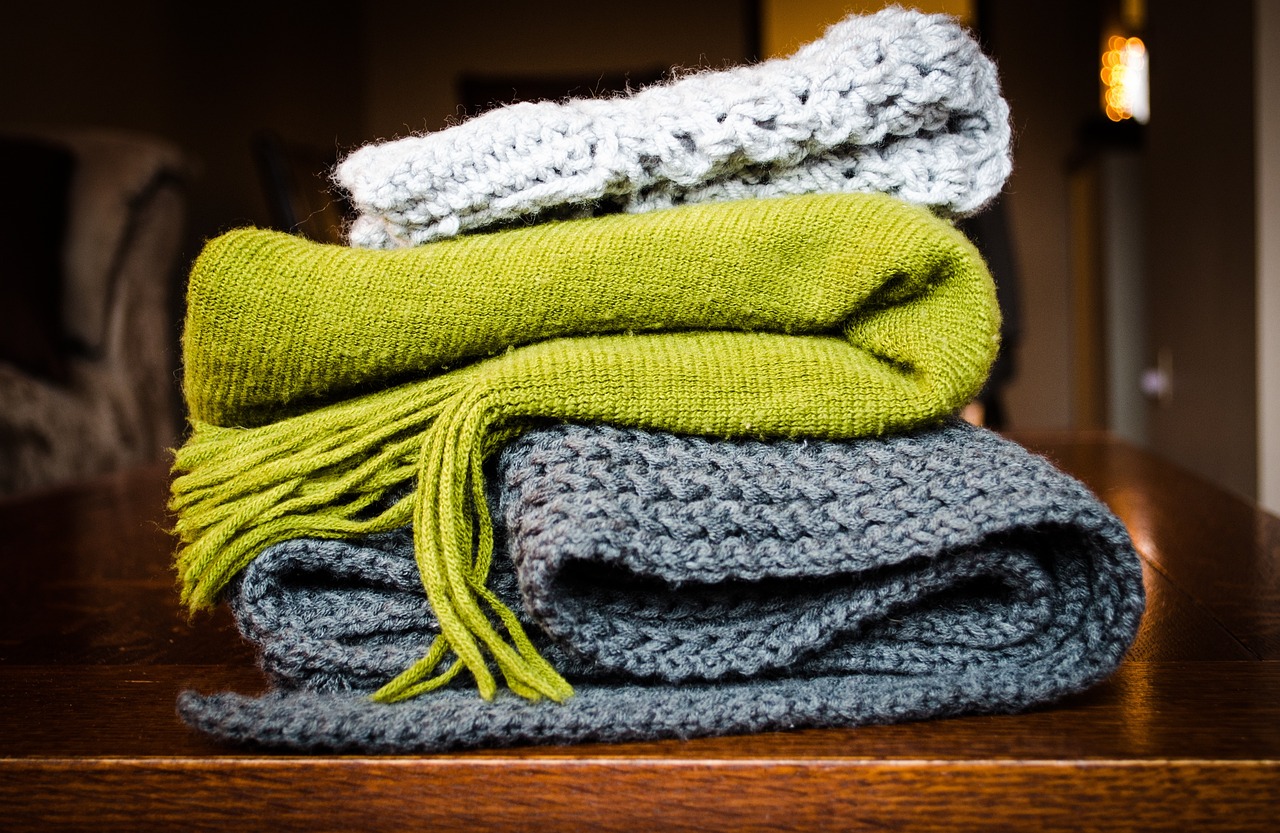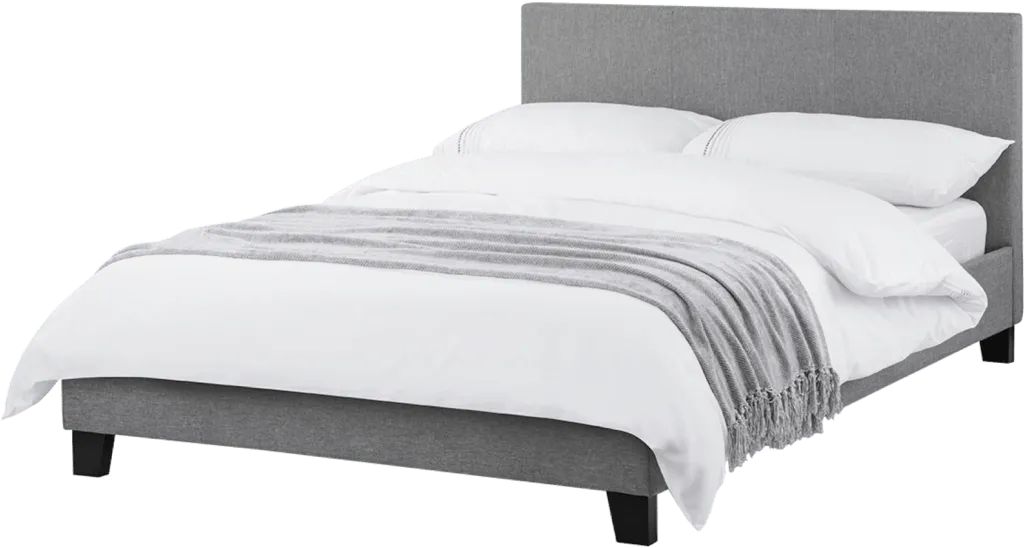What are Weighted Blankets & Why Would I Need One?
What are weighted blankets & what are they used for?
- What are weighted blankets?
- What are weighted blankets used for?
- What are the benefits of weighted blankets?
- How heavy should a weighted blanket be?
- What are the drawbacks of weighted blankets?
- How to wash a weighted blanket

What is a weighted blanket?
A weighted blanket is a type of blanket filled with materials such as plastic pellets, glass beads, or other dense materials that make it heavier than a traditional blanket. The added weight is intended to provide deep pressure stimulation to the body, which can have a calming effect on the nervous system and promote relaxation.
The origins of weighted blankets are not entirely clear, and it is difficult to determine the exact inventor of this product. However, it is known that weighted blankets have been used for therapeutic purposes for several decades.

It is believed that the concept of weighted blankets dates back to the 1990s, where they were initially used in occupational therapy for children with sensory processing disorders, attention deficit hyperactivity disorder (ADHD), and autism. The use of weighted blankets has since evolved and has gained popularity as a therapeutic tool for individuals struggling with anxiety, insomnia, and chronic pain.
Types of weighted blanket
Weighted blankets are sometimes referred to by other names which can cause some confusion. We often get asked what the difference and there’s very little difference other than the name. Here are the different names usually given to weighted blankets.
Gravity blankets
This is a common term used to describe weighted blankets because they apply gentle pressure to the body, creating a sensation similar to the feeling of being hugged or held.
Pressure blankets
This name emphasises the pressure that the blanket applies to the body, which can have a calming effect on the nervous system.

Therapeutic blankets
Some people refer to weighted blankets as therapeutic blankets because they are believed to have therapeutic benefits, such as reducing anxiety and improving sleep.
Sensory blankets
This term is often used to describe weighted blankets that are designed to provide sensory input for individuals with sensory processing disorders or other sensory challenges.
Heavy blankets
Some people simply refer to weighted blankets as heavy blankets because of their weight, which can range from several pounds up to 30 or more pounds, depending on the size and intended use.


What are weighted blankets used for?
Weighted blankets have become increasingly popular due to their potential therapeutic benefits. These blankets can be used on top of a mattress or when you’re sitting on a sofa. Think of them more as a throw that can be used anywhere you plan to relax.
There are a number of reasons why you would use a weighted blanket that we need to discuss so here are the top 5 reasons people use weighted blankets:
1. Better Sleep Quality
Weighted blankets have been found to improve sleep quality by increasing melatonin levels, which promote relaxation and help regulate the sleep-wake cycle. They can also help promote the production of serotonin (the feel-good neurotransmitter) and decrease cortisol (the stress hormone), leading to a reduction in anxiety.

2. Anxiety and Stress Reduction
The deep pressure from a weighted blanket can create a calming effect that helps reduce symptoms of anxiety and stress, promoting a sense of relaxation and comfort.
3. Relief from Sensory Overload
Weighted blankets are often used by people with sensory processing disorders, such as autism, to help manage sensory overload and provide a sense of security.
4. Pain Management
The pressure from a weighted blanket can help stimulate the release of endorphins, which act as natural painkillers and can provide relief from physical discomfort.

5. Improved Well-Being
Weighted blankets can promote feelings of comfort, safety, and security, which can improve overall well-being and help individuals feel more grounded and centered.
How heavy should a weighted blanket be?
The weight of a weighted blanket should generally be chosen based on the individual’s body weight. The general recommendation is that a weighted blanket should be around 10% of the user’s body weight, with some variation depending on personal preference and other factors.
Here are some guidelines for selecting the appropriate weight for a weighted blanket:
- 10% Rule: As a general rule of thumb, a weighted blanket should weigh around 10% of the user’s body weight. For example, if the user weighs 150 pounds (68 kilograms), a weighted blanket of approximately 15 pounds (6.8 kilograms) would be appropriate.
- Personal Preference: Some individuals may prefer a slightly heavier or lighter weighted blanket, depending on their personal preference. It’s essential to consider what feels comfortable and soothing for the individual.
- Health Considerations: Consider any health or medical conditions the individual may have. For example, if the person has a respiratory or mobility issue, a lighter weighted blanket may be more appropriate. Always consult with a healthcare professional for specific recommendations.
- Age and Developmental Stage: For children, the general recommendation is to choose a weighted blanket that is around 10% of their body weight, plus 1-2 pounds (0.45-0.9 kilograms) for safety. However, it’s crucial to consider the child’s developmental stage and individual needs, and consult with a pediatrician or occupational therapist for appropriate guidance.
- Safety Considerations: It’s important to ensure that the weighted blanket is not too heavy, as excessive weight can pose a safety risk, especially for individuals who may have difficulty moving or adjusting the blanket on their own.
It’s important to note that the appropriate weight for a weighted blanket can vary for each individual, and it’s always best to consult with a healthcare professional or occupational therapist for personalized recommendations based on individual needs and considerations.
What are the drawbacks of weighted blankets?
Not everybody gets on with weighted blankets and some people really don’t find them comfortable. It’s important trialling one before making the jump with buying one. if you’re concerned that you may not get on with a weighted blanket then have a look below at the number of frequently reported criticisms of weighted blankets.
Overheating
Some people find that the extra weight of a weighted blanket can cause them to overheat, particularly if they live in a warm climate or tend to sleep hot.

Difficulties with mobility
The weight of a weighted blanket can make it more difficult for some people to move around, which could be problematic for those with certain physical disabilities.
Potential discomfort
The pressure from a weighted blanket can be uncomfortable for some people, particularly those who don’t like feeling confined or restricted.
Size and weight restrictions
Depending on the specific blanket, there may be size and weight limitations that make it difficult for some people to find a blanket that fits their needs.
Expense
Weighted blankets can be more expensive than traditional blankets, which could be a barrier for some people who are interested in trying them out. From our research there are lots of price options out there – so don’t let this put you off!
It’s important to note that not everyone will experience these downsides, and many people find that the benefits of weighted blankets outweigh any potential drawbacks. However, it’s always a good idea to consider both the pros and cons before making a purchase.
How to wash a weighted blanket
Washing a weighted blanket can require some special care due to its weight and construction. Here are the general steps for washing a weighted blanket:
- Check the Care Instructions: Always refer to the care instructions provided by the manufacturer of your weighted blanket. Different blankets may have different care requirements, and it’s essential to follow them to avoid damaging the blanket.
- Remove the Cover: If your weighted blanket has a removable cover, start by unzipping or unbuttoning it and removing it from the blanket. The cover may have separate care instructions, so check them and wash it accordingly.
- Spot Clean if Needed: If your weighted blanket has any localized stains or spills, you can spot clean them using a gentle detergent and water. Avoid using bleach or harsh chemicals, as they may damage the fabric or the weighted fill inside.
- Use a Large Capacity Washing Machine: Washing a weighted blanket typically requires a washing machine that can handle the weight and size of the blanket. Check the manufacturer’s instructions for the recommended washing machine capacity. It’s generally a good idea to use a front-loading machine, as top-loading machines with agitators can potentially damage the blanket.
- Use a Gentle Cycle and Cold Water: Set your washing machine to a gentle cycle with cold water. Avoid using hot water or heavy agitation, as it may cause the weighted fill to shift or clump.
- Use a Mild Detergent: Use a mild detergent that is suitable for delicate fabrics. Avoid using fabric softeners or bleach, as they may damage the fabric or the weighted fill. Follow the detergent manufacturer’s instructions for the appropriate amount to use.
- Dry Thoroughly: After washing, remove the weighted blanket from the washing machine and gently squeeze out excess water. Avoid wringing or twisting the blanket, as it may cause damage. Hang the blanket or lay it flat to dry in a well-ventilated area, preferably out of direct sunlight. Make sure the blanket is fully dry before using or storing it, as dampness may cause mildew or odour.
- Reattach the Cover (if applicable): Once the weighted blanket is fully dry, you can reattach the cover if it’s removable, following the manufacturer’s instructions.
- Follow Special Care Instructions (if applicable): Some weighted blankets may have special care instructions due to their specific construction or materials. For example, blankets with glass beads may require additional care, such as hand washing or air drying. Always check the manufacturer’s instructions for any special care requirements.

By following these steps and the care instructions provided by the manufacturer, you can wash your weighted blanket effectively and keep it clean and fresh for continued use. For other mattress washing and stain removal tips, see our post here on washing a mattress.
Weighted blankets can be beneficial for many people, particularly those who experience anxiety, sleep disturbances, or sensory processing challenges. The added weight can provide a sense of comfort and security and may help to reduce stress and promote relaxation.
However, they are not suitable for everyone, and some people may experience discomfort or other negative effects from using a weighted blanket. It’s important to consider the potential benefits and drawbacks and talk to a healthcare professional before using a weighted blanket. Ultimately, the effectiveness of a weighted blanket will depend on the individual’s specific needs and preferences.
If you need further help in shortlisting suitable new mattresses give our small expert team a call for free advice on 0161 437 4419.


Ask us a question.
There are over 6000 questions and answers submitted by you on all questions about mattresses and bed problems. Enter a keyword such as Vi Spring, John Lewis beds, bad back or Memory Foam and see if your question has already been answered.
You can filter popular questions by the categories below. If you can’t find an answer, ask a new question below. We aim to respond to all questions within one working day.




































 Mattresses
Mattresses  Take our mattress quiz
Take our mattress quiz  Contact
Contact  About us
About us 



